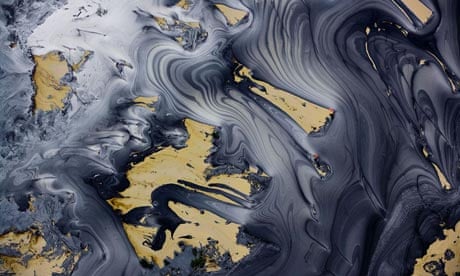This is a picture of one of the worst things on the planet: the Athabasca oil sands in Alberta, Canada. Oil is extracted from the sands here, leaving this residue. What you're looking at is essentially poison and pollution, yet the shot has great beauty. If you look closely to the middle right, you can see bits of pink: these are flag-like devices to stop birds landing – they would die straight away.
I took this while making my film Home, which features aerial views of 50 countries. I always take hundreds and hundreds of pictures. I used to work for National Geographic, and they gave us a lot of film. I still shoot too much, but you don't get a second chance with something like this. So you shoot a stop under, a stop over, with a lot of different lenses and shutter speeds.
My team and I were over the sands in a helicopter for two days and, because we had no authorisation, I was afraid we would have problems. So we'd fly in for five minutes, shoot, then head off. If you stay too long in the same place, people notice. They might go to the airport, wait for us, and take our film away. Some places can be very rough: in Argentina, we were jailed for a week because we photographed a dam.
It's not me who decides where to go: it's the pilot. So it's vital to have someone who is interested in the pictures and who can put me in a good position. I'm not an expert when it comes to technology, but what changed things for me was autofocus. I used to have to throw away half my pictures because it was so difficult to get the focus right.
I first discovered aerial photography in Kenya with my wife, in the 1970s. I was studying lions, but also trying to make a living taking tourists up in a hot-air balloon. The Rio Earth Summit in 1992 changed my life completely, turning me into an activist. From the air, you see things you can't see from the ground – you really understand the impact of man, even in a place you know well. My work is meant to convince people we can no longer live like this.
Born Paris, 1946.
Inspirations "Swiss photographer Georg Gerster, the first person to take aerial pictures like mine."
Study "I wanted to be a scientist. I did a thesis on lions. But I realised photography can show things writing can't. Lions were my professor of photography."
High point "Photographing the lions."
Low point "Three helicopter crashes."
Top tip "Never ask for advice. Don't follow others."
